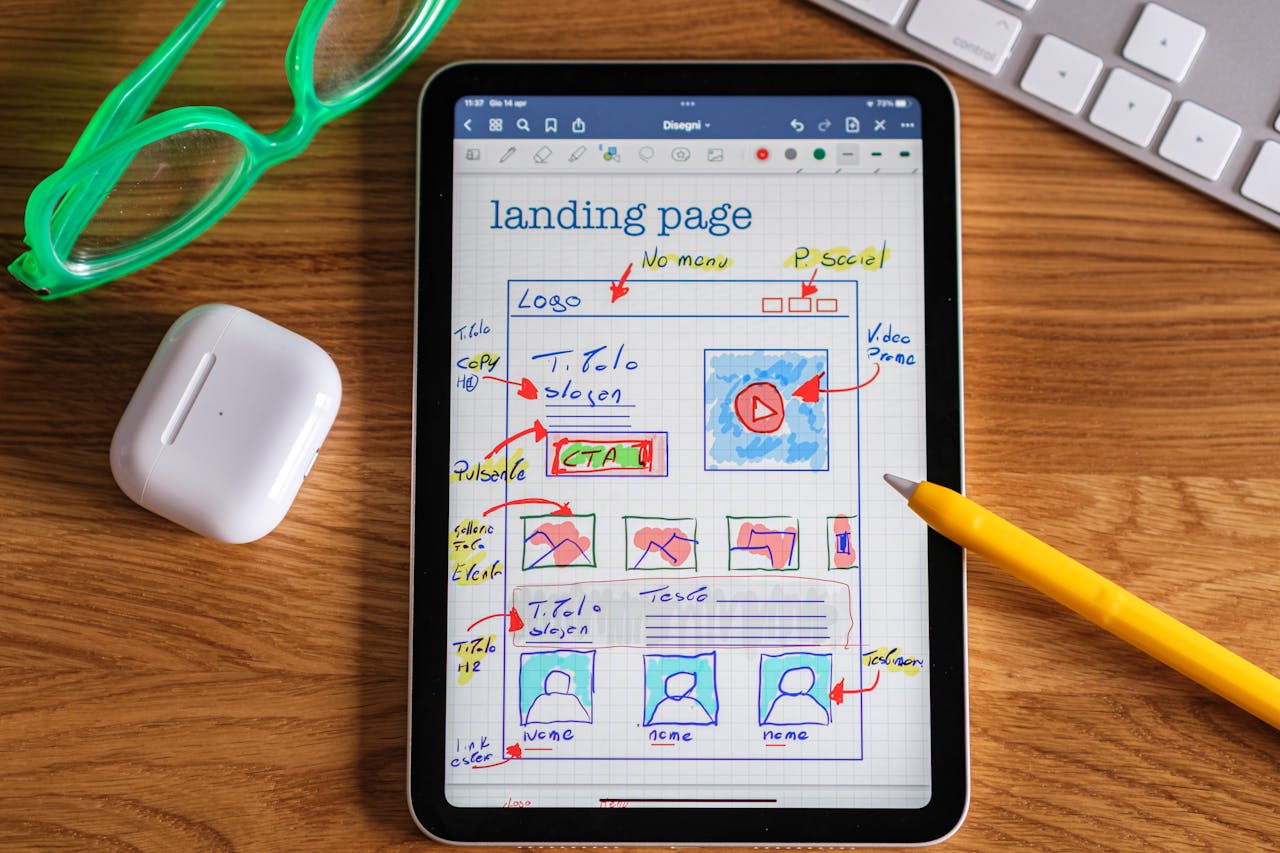Converting website visitors into customers remains one of the most challenging aspects of digital marketing. Data from Unbounce shows that the average landing page conversion rate across industries is just 4.02%, meaning most businesses fail to turn 96% of their traffic into leads or sales. But top-performing landing pages can achieve conversion rates of 25% or higher through strategic optimization. This comprehensive guide breaks down the essential elements and proven techniques for creating high-converting landing pages based on extensive research and testing data. You’ll learn specific, actionable methods for improving your calls-to-action, reducing page load times, implementing effective A/B tests, and measuring results.
PR Overview
The Fundamentals of Landing Page Optimization
Landing page optimization combines art and science – merging persuasive copywriting and design with technical performance and data analysis. According to CXL Institute research, visitors form their first impression of a landing page within 50 milliseconds. This means every element must work together seamlessly to communicate value and drive action.
The most effective landing pages share several key characteristics:
- They maintain laser focus on a single conversion goal
- They match visitor intent and expectations
- They load quickly and function flawlessly
- They communicate benefits clearly and credibly
- They make taking action simple and compelling
Let’s examine how to implement each of these elements systematically.
Creating High-Converting Calls-to-Action
Your call-to-action (CTA) serves as the tipping point between success and failure. Research from WordStream found that personalized CTAs convert 202% better than generic buttons. Here’s how to craft CTAs that drive action:
Use Action-Oriented Language
Start your CTA copy with strong command verbs that clearly tell visitors what to do. Tests by Unbounce showed that beginning CTAs with words like “Get,” “Start,” “Join,” and “Create” resulted in 47% higher click-through rates compared to passive language.
Add Urgency When Appropriate
Scarcity and time pressure can provide powerful motivation. HubSpot’s analysis revealed that adding phrases like “Limited Time” or “Only X Spots Left” increased CTA clicks by 38% on average. However, artificial urgency can damage trust – only use these tactics when legitimate.
Primary CTAs should stand out visually through size, color contrast, and white space. Tests by VWO found that making the main CTA button 20% larger than other page elements increased clicks by 32%. Secondary CTAs should be visually subordinate to maintain focus on the primary conversion goal.
Optimizing Page Load Speed
Slow loading times kill conversions before visitors even see your content. Google data shows that 53% of mobile visitors abandon pages that take longer than 3 seconds to load. Here are proven ways to accelerate your landing pages:
Image Optimization
Large image files are often the biggest culprit in slow page loads. Convert images to next-gen formats like WebP, which provides 25-35% smaller file sizes compared to JPEG according to Google’s own testing. Tools like TinyPNG can compress images without visible quality loss.
Minimize HTTP Requests
Each element loaded from your server requires a separate HTTP request. Research from Pingdom found that reducing HTTP requests from 80 to 40 improved load times by 48% on average. Combine multiple CSS/JavaScript files, use CSS sprites for icons, and eliminate unnecessary third-party scripts.
Leverage Browser Caching
Proper cache settings allow returning visitors to load your page from their local browser storage instead of downloading resources again. Studies by GTmetrix showed that implementing browser caching reduced repeat visit load times by up to 70%.
Implementing Strategic A/B Testing
Random testing wastes time and resources. Follow these research-backed principles to run meaningful optimization experiments:
Test One Variable at a Time
Isolate individual elements to measure their specific impact. Testing multiple changes simultaneously makes it impossible to determine which change drove results. According to Optimizely, single-variable tests produce 23% more statistically significant results.
Ensure Valid Sample Sizes
Small sample sizes produce unreliable data. Use an A/B test calculator to determine the minimum traffic needed for statistical confidence. VWO recommends at least 100 conversions per variation before drawing conclusions.
Segment Results by Traffic Source
Different traffic sources often behave differently. Analysis by CXL found that paid search visitors converted 38% better on short-form pages while organic visitors preferred long-form content. Segment your test data to reveal these patterns.
Aligning Copy with Visitor Intent
The words you use can make or break your conversion rate. Research these key copywriting elements:
Headlines That Connect
Your headline must instantly communicate relevance. Studies by Conductor found that headlines containing numbers and addressing a specific audience converted 36% better than generic headlines.
Clear Value Propositions
Explain your unique benefits in concrete terms. According to Marketing Experiments, clearly stating value propositions increased conversion rates by up to 90% compared to vague marketing speak.
Third-party validation builds trust. Adding customer testimonials increased conversions by 34% in tests run by WikiJob. Include specific results and full names/companies when possible.
Mobile Optimization Essentials
With over 50% of web traffic now mobile, optimizing for smaller screens is critical:
Responsive Design
Your page must adapt seamlessly to any device. Google found that 61% of users are unlikely to return to a mobile site they had trouble accessing.
Touch-Friendly Elements
Buttons and forms need adequate spacing for touch input. Microsoft guidelines recommend touch targets at least 44×44 pixels with 10 pixels of padding.
Simplified Content
Mobile users have less patience for lengthy content. Tests by Marketing Sherpa showed that reducing mobile content length by 50% improved conversion rates by 59%.
Measuring and Analyzing Results
Track these key metrics to gauge optimization success:
Conversion Rate
Calculate the percentage of visitors who complete your desired action. The industry average is 4.02% according to Unbounce, but top performers can reach 25%+.
Bounce Rate
High bounce rates indicate misaligned expectations or poor experiences. Google Analytics data shows average landing page bounce rates between 60-90%.
Time on Page
Longer time on page often correlates with higher engagement. Crazy Egg found that pages with 3+ minute average visit times converted 50% better.
Conclusion
Landing page optimization requires ongoing testing and refinement informed by data. Focus first on the core elements covered here:
- Craft compelling CTAs with action-oriented language
- Reduce load times through technical optimization
- Run strategic A/B tests of individual variables
- Align copy with visitor intent and expectations
- Optimize for mobile users
- Track key metrics to measure progress
Start by auditing your current landing pages against these best practices. Identify the biggest opportunities for improvement and create a testing roadmap. Remember that optimization is iterative – small gains compound over time into significant conversion lifts. The most successful companies view landing page optimization as an ongoing process rather than a one-time project.
SEO and Content Strategy for Beauty and Wellness Brands
The beauty and wellness industry operates in one of the most saturated digital markets, where...
How To Run Compliant Web3 Influencer Campaigns
Web3 projects face a precarious balancing act: they need influential voices to cut through market...
How AI Is Transforming Influencer Marketing
The influencer marketing industry stands at an inflection point. After years of explosive growth,...




